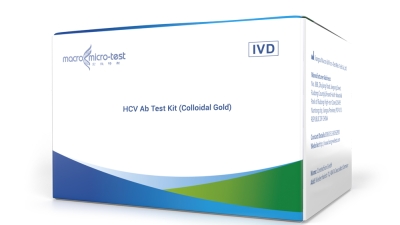5 Key Benefits of Using Influenza A&B Test for Early Diagnosis
Table of Contents
- Understanding the Importance of Early Diagnosis in Influenza A&B
- How Influenza A&B Tests Work: A Comprehensive Overview
- The Top Five Benefits of Rapid Influenza Testing for Patients
- Improving Patient Outcomes Through Early Detection of Influenza
- Cost-Effectiveness of Influenza A&B Testing in Healthcare Settings
- Real-World Applications: Success Stories of Early Diagnosis with Testing
- Exploring the Rising Demand for HCV Ab Test Kits: Insights from Recent Industry Reports and Market Trends
- FAQS
- Conclusion
- Related Posts
Influenza is still a big public health issue all around the world. The World Health Organization estimates that each year, seasonal flu outbreaks cause anywhere from about 290,000 to 650,000 respiratory-related deaths—that's pretty staggering, right? Getting an early diagnosis is so important if we want to treat it effectively and prevent huge outbreaks. That's where the Influenza A&B Test really makes a difference. It helps healthcare providers identify the virus quickly, so they can start the right treatments and take preventive steps without wasting time.
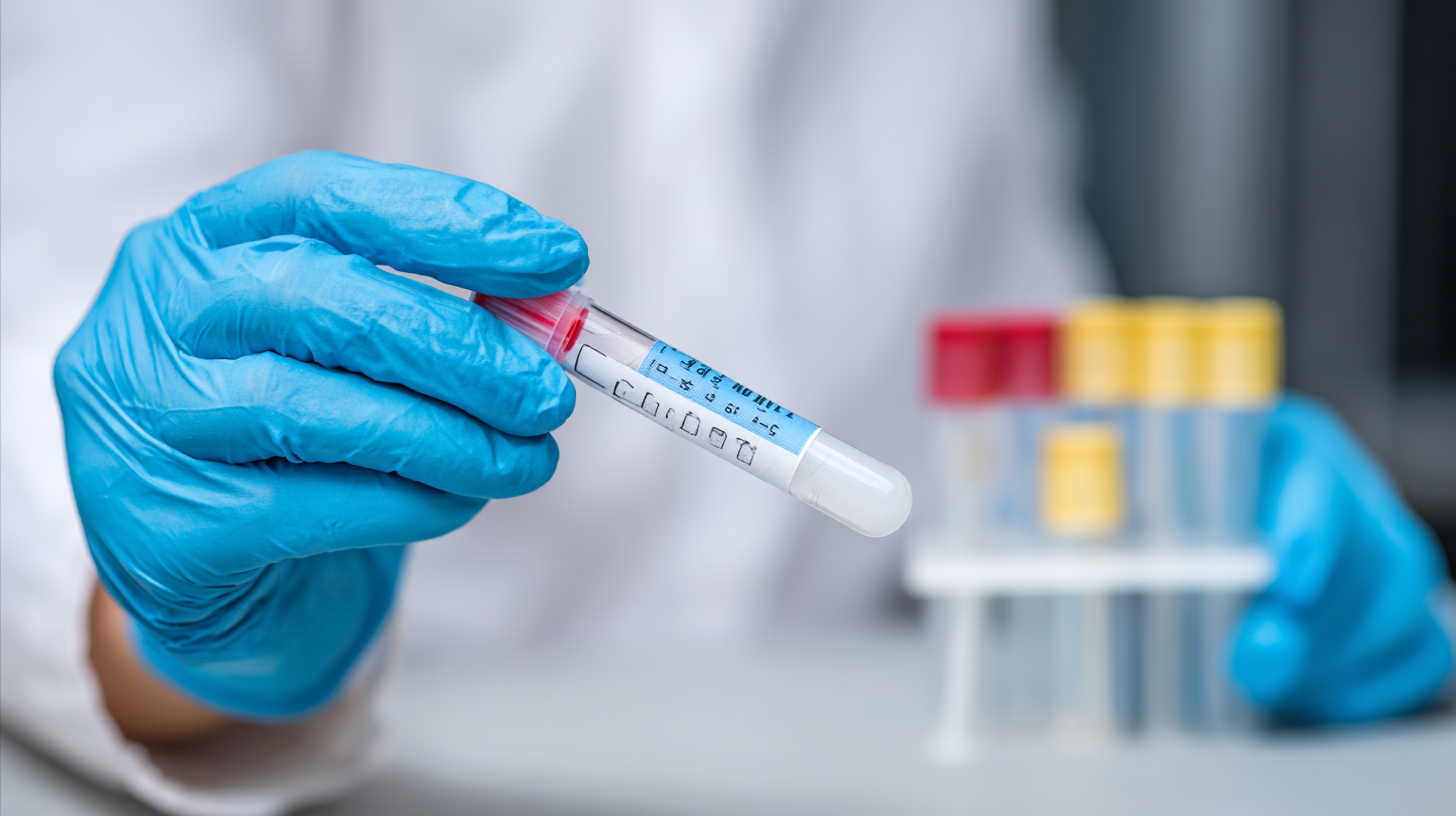
Since 2010, Jiangsu Macro & Micro-Test Med-Tech Co., Ltd. has been a leader in creating innovative diagnostic tools. They've got a solid track record with new in vitro diagnostic reagents, and their focus on research and development means they're constantly working to improve how accurately and efficiently we can detect flu early on. Using their own cutting-edge tech and top-notch manufacturing capabilities, the goal is clear—help more patients get the care they need faster and better, especially with their Influenza A&B Test now being used more widely in clinics.
All in all, it’s about staying ahead of the game and making sure people get quick, reliable results so they can get the right treatment as soon as possible.
Understanding the Importance of Early Diagnosis in Influenza A&B
Catching Influenza A and B early on is super important if you want to manage and treat these viruses effectively. When you identify symptoms quickly, it really helps slow down the spread of the virus and eases the burden on hospitals and healthcare workers. Did you know that, according to the CDC, there's roughly 9 to 45 million flu cases in the US every year? And sadly, this leads to somewhere between 12,000 and 79,000 deaths annually. The sooner you can figure out whether you’ve got the flu, the better your chances of starting antiviral treatment early, which can really cut down how bad the illness gets.
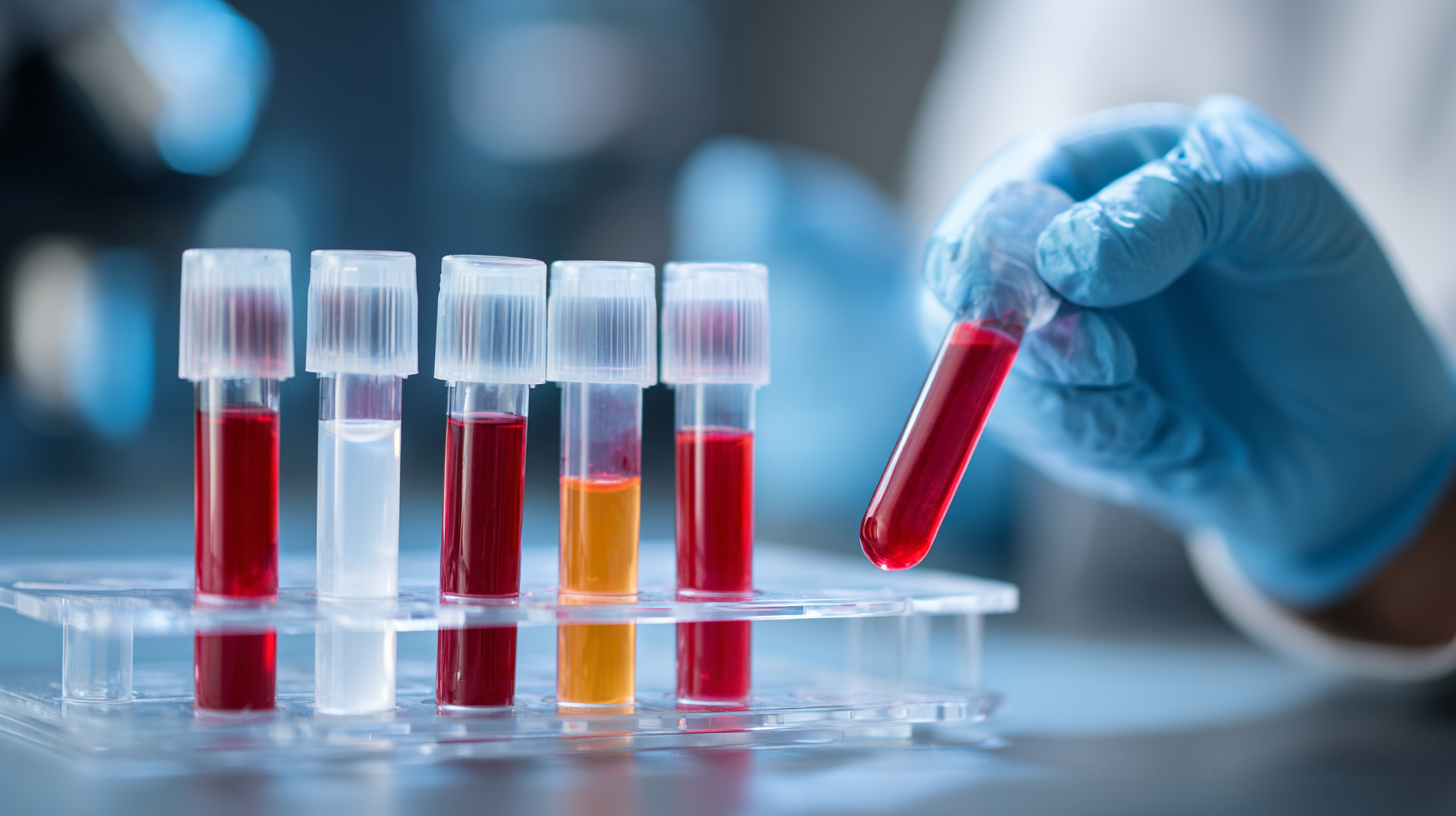
Using influenza tests early on can actually make a big difference in how well someone responds to treatment. Research shows that people who start antiviral meds soon after symptoms appear are up to 50% less likely to end up in the hospital. Plus, with rapid tests delivering results in just a few hours, doctors can make smarter, quicker decisions. That means faster treatment and prevention plans—especially crucial for folks like the elderly or anyone with other health issues.
Here’s a quick tip for catching the flu early:
- Stay in the loop about flu season and know the symptoms—early recognition really makes a difference when it comes to testing and treatment.
- If you start feeling really sick—high fever, extreme tiredness—try to get tested within the first couple of days so you can start antivirals early on and get better faster.
- And don’t forget—vaccinating yourself, your family, and your community is a big help. It’s key not just for preventing the flu but also for catching it early and stopping it from spreading.
How Influenza A&B Tests Work: A Comprehensive Overview
Tests for influenza A and B are really important when it comes to catching the flu early on. They help doctors figure out what's going on quickly, which means patients can get the right treatment faster. There are a few different ways these tests work. The rapid antigen tests, for example, detect specific proteins on the surface of the flu virus. When someone shows flu symptoms, usually a quick sample is taken from the nose or throat. The best part? It can deliver results in just a few minutes, so you don’t have to wait long to know if you have the flu.
Then there’s the PCR test, which is a bit more sophisticated. It’s super sensitive and can pick up tiny amounts of viral DNA or RNA. That’s especially handy if someone’s showing symptoms but the rapid test comes back negative—because the PCR can catch things that others might miss. This way, doctors can confidently confirm whether it’s influenza A or B. Understanding how these tests work really helps healthcare providers decide on the best course of action—leading to quicker recoveries and fewer complications down the line. With flu season always lurking around the corner, making good use of these tests is key to managing patients effectively.

The Top Five Benefits of Rapid Influenza Testing for Patients
You know, rapid flu tests have really changed how healthcare providers handle and diagnose folks showing flu-like symptoms. One of the biggest perks? How quick the results come back. Most studies say you can get your results in about 30 minutes, which means doctors can make faster decisions about what to do next. That kind of speed not only makes the whole experience a lot less stressful for patients but also helps in keeping flu outbreaks under control—especially during those crazy peak seasons when positive cases skyrocket.
Another thing I’ve come across is how pretty reliable these quick tests actually are. The CDC mentions that rapid flu diagnostic tests can catch the virus with roughly 70 to 90% accuracy. That’s pretty good, right? It really helps ensure more people get the right antiviral treatments early on. Acting fast like that can make symptoms milder and even cut down on the chance of serious complications, especially for older folks or anyone with pre-existing health issues.
So, here’s a little tip: if you’re heading to the doctor with flu symptoms, don’t forget to ask if they’re doing rapid flu testing. Also, it’s a good idea to find out how to prepare for the test—it can help make the results more reliable. And hey, stay on top of the latest updates about the flu season, so you can recognize symptoms early and get medical help when you need it most.
Improving Patient Outcomes Through Early Detection of Influenza
Catching influenza early is super important if we want to give patients the best shot at a quick recovery. That’s where Influenza A&B tests really come in—they're a key part of the puzzle. The CDC keeps emphasizing that diagnosing the virus in time can really cut down on serious complications, hospital stays, and even save lives. Quick tests mean doctors can start on antiviral meds faster, which might even shorten symptoms by a couple of days and help stop the virus from spreading in the community.
At Jiangsu Macro & Micro-Test Med-Tech Co., Ltd., we totally get how crucial it is to have smart, innovative tools for diagnosing flu. We’re constantly pushing the envelope with our R&D to create top-notch in vitro diagnostic reagents powered by the latest tech. Research shows that these rapid tests can accurately spot influenza viruses in about 70-90% of cases—that’s pretty good and makes catching the flu early a real possibility. By improving our testing options, we want to make life easier for healthcare providers, helping them make smarter decisions faster, which ultimately leads to better patient care and healthier communities.
5 Key Benefits of Using Influenza A&B Test for Early Diagnosis
This chart illustrates the key benefits of utilizing the Influenza A&B test for early diagnosis, enhancing patient outcomes through timely detection.
Cost-Effectiveness of Influenza A&B Testing in Healthcare Settings
You know, when it comes to testing for Influenza A and B in healthcare settings, folks are really starting to pay more attention to how cost-effective it is. I came across a study in the *Journal of Infectious Diseases* that caught my eye — it mentioned that doing early diagnosis with rapid tests can actually save healthcare systems around $1,200 per case. That’s mostly because it helps avoid unnecessary hospital stays and a bunch of other costly interventions. Plus, when healthcare providers can quickly identify and treat flu cases, it helps lighten the load, especially during those hectic flu seasons.
On top of that, rapid flu tests seem to cut down on the use of broad-spectrum antibiotics — which, honestly, can lead to more expenses thanks to side effects and antibiotic resistance. The CDC even reports that targeted antiviral treatments, guided by fast testing, can cut down the sickness duration by up to half. That’s pretty huge for busy hospitals trying to get people in and out efficiently. All in all, testing not only helps patients get better faster but also makes good financial sense by better utilizing resources. It’s like a smart move for public health — both for the wallet and for folks’ well-being.
5 Key Benefits of Using Influenza A&B Test for Early Diagnosis - Cost-Effectiveness of Influenza A&B Testing in Healthcare Settings
| Benefit | Description | Impact on Cost-Effectiveness | Clinical Outcomes |
|---|---|---|---|
| Early Detection | Identification of Influenza A&B at an early stage allows for timely intervention. | Reduces overall treatment costs by preventing complications. | Higher recovery rates and lower hospitalization duration. |
| Improved Patient Management | Allow healthcare providers to tailor treatment based on specific virus strain. | Optimizes use of resources and medication. | Better patient adherence to treatment plans. |
| Reduced Spread of Infection | Quick diagnosis helps in implementing isolation procedures. | Decreases the number of infectious individuals, lowering healthcare burden. | Decreased transmission rates in community settings. |
| Cost-Effective Testing | Testing allows for differential diagnosis that can save on unnecessary treatments. | Cost savings through reduced expenditure on unrelated diagnostics. | Improved efficiency of healthcare services. |
| Enhanced Public Health Surveillance | Data collected can inform public health initiatives and preparedness plans. | More cost-effective allocation of public health resources. | Improved outbreak response and management. |
Real-World Applications: Success Stories of Early Diagnosis with Testing
You know, in healthcare, catching problems early really makes a huge difference—especially during flu season. The Influenza A&B test has become a pretty handy tool, and there are lots of real-world stories showing just how important it is for quick diagnosis. For instance, many clinics have had great success with these rapid tests; by getting results fast, they can start treatment right away, which often leads to better outcomes for patients. I heard about a local clinic that started using rapid flu testing and was able to give antiviral meds within just a few hours of symptoms showing up. That made a real difference—shortening the illness and helping prevent serious complications, especially for folks at higher risk.
And it’s not just about individual patients—these tests are huge when it comes to controlling outbreaks. Take a recent case, for example: a school was dealing with an outbreak of flu-like symptoms among the students. Thanks to rapid flu testing, the healthcare team quickly pinpointed which strain was spreading around, and they were able to roll out targeted vaccines and containment strategies fast. This not only helped most students recover quicker but also kept the virus from spreading further. It’s clear that early diagnosis with these tests plays a crucial role in managing flu outbreaks and safeguarding public health. All these stories really highlight how important it is to catch the flu early and how adopting these testing methods can honestly make a big difference in healthcare settings.
Exploring the Rising Demand for HCV Ab Test Kits: Insights from Recent Industry Reports and Market Trends
The demand for Hepatitis C Virus (HCV) antibody test kits has surged in recent years, driven by a greater awareness of the disease and an increase in diagnostic initiatives. Recent industry reports highlight a growing need for effective and reliable testing solutions, particularly in regions with high HCV infection rates. These test kits play a critical role in the auxiliary diagnosis of patients suspected of HCV infection, facilitating timely intervention and treatment.
The qualitative detection of HCV antibodies in human serum or plasma is pivotal for managing patient care. By utilizing these kits, healthcare providers can quickly ascertain the presence of HCV antibodies, which not only aids in the diagnosis but also helps in screening efforts aimed at controlling outbreaks in high-risk areas. As the global health community heightens its focus on combating viral hepatitis, the integration of efficient diagnostic tools like HCV Ab test kits will be essential for enhancing patient outcomes and curbing the spread of infection. The rising market trends illustrate an urgent need for these products, signifying a shift towards improved healthcare strategies and increased vigilance against this silent epidemic.
FAQS
&B important?
The CDC estimates that approximately 9 to 45 million cases of influenza occur annually in the United States.
Rapid testing provides results within hours, enabling healthcare providers to make informed decisions and initiate appropriate antiviral treatment quickly, which can reduce symptoms and complications.
It is advised to seek testing within the first 48 hours of experiencing symptoms, such as high fever or severe fatigue, to take full advantage of antiviral medications.
Vaccination plays a significant role in prevention and early detection strategies, not only for individuals but also for community members, which helps to protect vulnerable populations.
Studies show that patients receiving early antiviral therapy can reduce their risk of hospitalization by up to 50%.
Rapid diagnostic tests can accurately identify influenza viruses in approximately 70-90% of cases, enhancing early detection efforts.
Yes, early diagnosis through rapid testing can effectively identify influenza strains during outbreaks, enabling targeted vaccination and containment measures to minimize spread.
They are committed to research and development of advanced diagnostic solutions to enhance testing capabilities, streamline clinical workflows, and improve health outcomes for patients.
Healthcare facilities have reported improved patient outcomes and reduced illness duration through the quick turnaround of influenza tests, particularly in high-risk populations, demonstrating the significant benefits of early diagnosis.
Conclusion
Getting an early diagnosis of influenza A and B really makes a huge difference when it comes to managing patients effectively and keeping the virus from spreading. The 'Influenza A&B Test' is pretty much a game-changer—showing just how much faster testing can lead to better outcomes. When healthcare providers can detect the flu quickly, they can start treatment sooner, which means patients tend to recover faster and fewer complications pop up.
But it’s not just about the patients. This kind of testing also helps cut down healthcare costs in the long run. Catching the flu early means less money spent on treatments and making better use of resources overall. If you look at real-world examples—like the case studies from companies such as Jiangsu Macro & Micro-Test Med-Tech Co., Ltd., dedicated to improving diagnostic tools—you see how effective early diagnosis really is in practice.
Related Posts
-

Future Trends in Gene Cyp2c19 Market Analysis for 2025 and Beyond
-

Exploring the Features and Applications of Cervical Cancer Self Test Kits: A Comprehensive Guide
-

The Future of Best tt3 Innovations in Efficiency and Performance
-
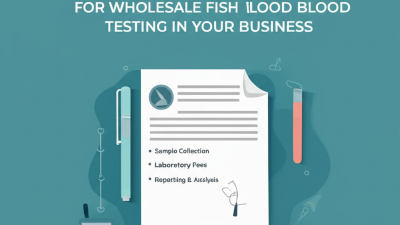
Understanding the Cost Factors for Wholesale Fish Blood Testing in Your Business
-
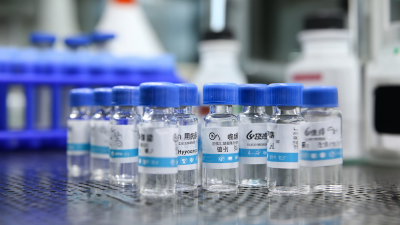
Discover Top-Quality Hpylori Test Solutions from Premier Chinese Manufacturers
-
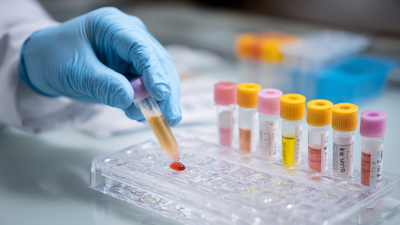
The Future of Rapid Testing Solutions for Malaria Wholesale Suppliers


